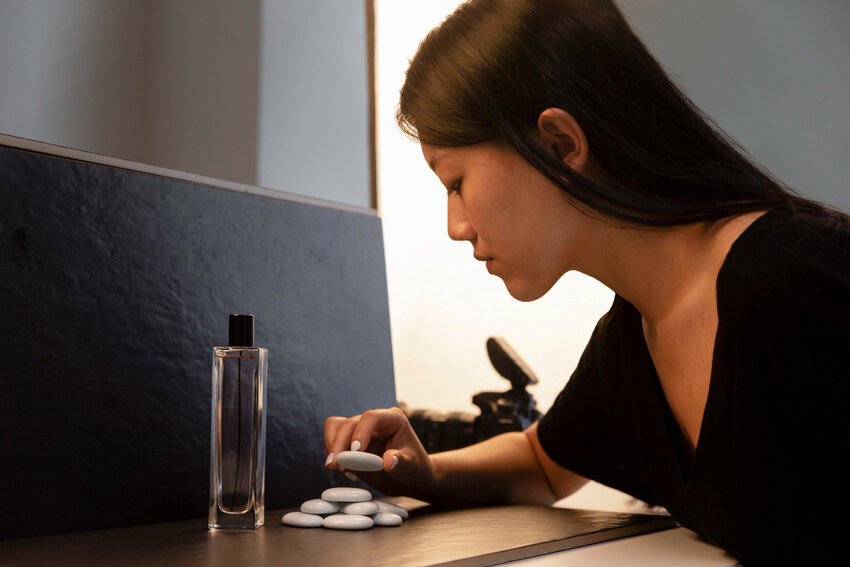Addiction doesn’t always look like the movie version, dramatic and obvious. For many women, it slips into life quietly, hiding behind responsibilities, appearances, and the pressure to hold everything together. Recognizing the early signs often takes a careful look beneath the surface, because they’re not always loud or visible. The truth is, the signals can be subtle, and they’re often brushed off until they grow into something harder to manage. Understanding what to watch for makes space for compassion, early help, and real change.
Balancing It All While Slipping Away
One of the clearest indicators that something deeper is going on is when balance begins to crack. A woman might still be showing up for work, picking up the kids, and keeping a calendar full of commitments, yet she’s quietly fraying at the edges. Responsibilities that once felt manageable start to feel heavy, and there’s a constant need for something to take that weight off. That “something” might be alcohol, prescription medication, or another substance, used at first in the name of coping but gradually becoming a constant fixture.
Because so many women feel pressure to stay composed, they become skilled at hiding what’s really happening. They’ll downplay how much they’re drinking, mask fatigue with makeup and coffee, or push through commitments while their inner life feels like it’s unraveling. The ability to keep up appearances makes addiction harder to spot from the outside, but the toll is unmistakable within. The real clue is when “functioning” starts to mean leaning more heavily on something that dulls the stress or provides temporary escape.
The Body Sends Its Own Messages
The body is often the first to raise the alarm, even before the mind catches on. When substances become part of the daily rhythm, the body reacts in ways that can’t be ignored forever. Unexplained fatigue, stomach upset, or frequent headaches might creep in. Sleep becomes irregular, and even when exhaustion sets in, it can be impossible to drift off. That ongoing pattern of trouble sleeping isn’t just about stress, it can be a sign that the system is struggling to regulate itself against outside substances.
Physical health might also begin to shift in more obvious ways, from weight fluctuations to skin changes. Someone who once kept a steady exercise routine might start skipping it, or meals might become inconsistent. These aren’t surface-level quirks, but signals that the body is adjusting to a new normal. Sometimes those around her chalk it up to being busy or worn out, but the connection to substance use often runs deeper. The body doesn’t lie, and it tends to reveal what’s happening beneath the surface long before words do.
Mood and Mind Under Pressure
Addiction often wears the mask of irritability, anxiety, or emotional swings. When substances take center stage, moods can shift quickly and unpredictably. What was once mild stress becomes overwhelming, or small frustrations turn into outsized reactions. Anxiety grows sharper, or a flat sense of disinterest takes hold. The difficulty isn’t just emotional, it’s chemical, because the brain is being asked to recalibrate around the presence of drugs or alcohol.
Relationships may feel the strain first. Friends and family notice that patience wears thin, or that conversations feel more distant. The need to defend or hide substance use can also create tension, building walls where there used to be openness. For women juggling careers, families, and personal lives, the shame of not wanting anyone to notice can compound the emotional toll. This inner conflict often looks like withdrawal from social situations or covering up behaviors with excuses. What reads as moodiness or stress to outsiders is often a deeper fight happening privately.
The Role of Support and Connection
Recognizing addiction in women isn’t just about spotting warning signs, it’s about creating paths toward help that feel safe and supportive. The stigma around addiction still keeps many women silent, especially when they worry about how it might affect their families or careers. Having trusted places to turn—whether through 12-step groups, a women’s rehab center or individual therapy—can make an enormous difference. Specialized treatment centers like a Beverly Hills rehab, often offer discreet, luxury, and gender-specific programs that cater to the unique needs of women, providing a high level of care and privacy. Each option offers a way to step out of isolation and into community, which is often where the turning point begins.
Support also means understanding that recovery doesn’t follow a single formula. For some, sharing stories in a group setting provides accountability and relief. For others, private sessions with a therapist open space to untangle the layers of stress and dependence. A women’s program may also provide the unique benefit of addressing the particular challenges that women face, from balancing caregiving roles to handling the stigma that can be harsher than what men often encounter. The core of all these approaches is connection, because addiction thrives in silence, and recovery grows in community.
The Subtle Social Signals
While physical and emotional signs are important, social patterns can be just as telling. A woman who once loved hosting dinners or spending time with friends may suddenly start cancelling plans, claiming exhaustion or schedule conflicts. Social withdrawal often isn’t about disinterest, it’s about avoiding situations where substance use would be noticed, judged, or harder to maintain. The shift can also go the other way: she may seek out more gatherings where alcohol or substances are central, blending in to mask her own increased use.
Professional life can show similar signals. Missed deadlines, more frequent sick days, or declining performance might surface after years of reliability. Colleagues might notice she seems distracted or checked out, though the underlying cause isn’t always visible. When patterns like this combine with physical or emotional changes, they often point to something more than just burnout or stress. These are the quiet signs that tend to emerge in the spaces where people feel watched or measured, revealing the tension between trying to keep everything together and quietly falling apart.
Why Early Recognition Matters
The earlier addiction is acknowledged and the right Houston drug treatment, or addiction treatment elsewhere is provided, the better the chances for meaningful recovery. For women, this recognition isn’t only about avoiding long-term health consequences, it’s about preserving quality of life across relationships, careers, and personal identity. Early recognition can interrupt the cycle before it deepens into dependency, but it also carries emotional weight. Many women fear what acknowledging the problem might mean for their families, reputations, or futures. That’s why compassion and clarity are essential. Recognizing signs without judgment opens the door to change without piling on more shame.
It’s also worth remembering that addiction doesn’t erase strengths or achievements. A woman battling substance use may still be excelling in many parts of her life, which makes it easy for those around her to miss the signs. Separating the person from the problem is key. Recognizing the signs isn’t about labeling or limiting her, it’s about making sure she knows she doesn’t have to handle this alone.
Finding Hope in Awareness
Understanding the early signals of addiction in women isn’t about fear, it’s about opportunity. Awareness creates the chance to step in before the problem escalates, and it gives women permission to seek help without waiting for a crisis. By paying attention to the shifts in health, mood, social patterns, and overall balance, it becomes possible to notice when something is off. That awareness, when paired with compassion, can be the difference between prolonged struggle and an open door to recovery.
Addiction may hide in plain sight, but so does resilience. Recognizing what’s happening is often the first spark that lights the way forward.
Read Dive is a leading technology blog focusing on different domains like Blockchain, AI, Chatbot, Fintech, Health Tech, Software Development and Testing. For guest blogging, please feel free to contact at readdive@gmail.com.





